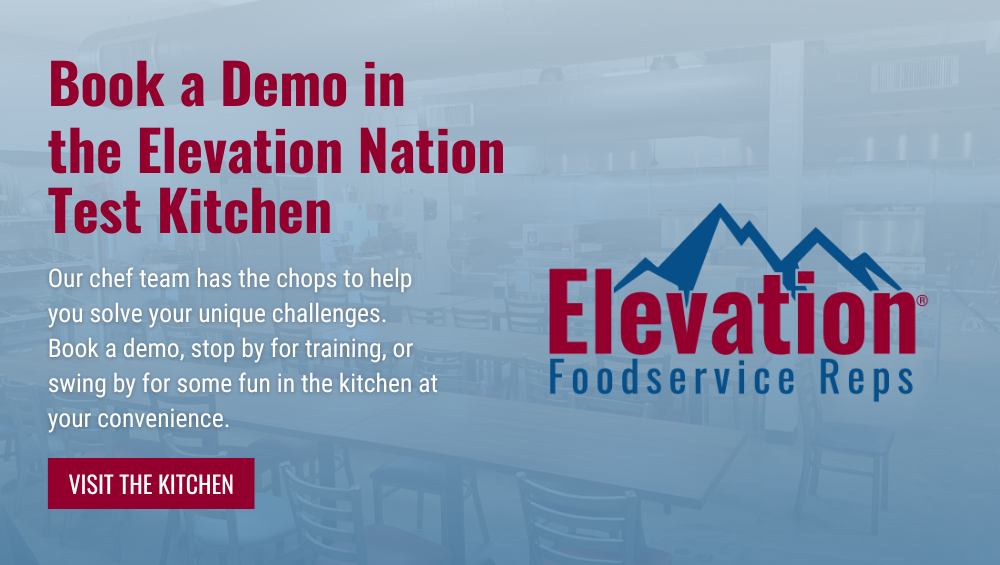ELEVATION NATION BLOG

What Your Chain Restaurant Needs to Meet Growing Demands
The southwestern region of the United States, specifically Colorado, has always been a breeding ground for some of the nation's most well-known chain restaurants. That said, success isn't always easy. Roadblocks including labor challenges, supply chain issues, and changing consumer expectations have all impacted local chains.
Let's look at some of those challenges, as well as some potential solutions, that can help chain restaurant operators adapt and succeed in a very competitive marketplace.
Service
Every person working in the foodservice industry represents a company’s brand, especially if the restaurant is a chain. Whether it’s the chef, line cooks, bar backs, cashier, wait staff, or busser, investing in good employees is crucial for the success of any chain restaurant because chains are expected to deliver consistently, no matter the location.
The front and back-of-house staff are the face of the restaurant, directly impacting customer experiences, online reviews, and sales. Those employees should be trained on all processes to deliver quality experiences that are attentive, prompt, and friendly even in the midst of rushes. Creating an efficient ordering process supported by well-trained employees will promptly meet customer needs and prevent customer dissatisfaction. By hiring individuals passionate about the foodservice industry and investing in their training, business operators cultivate a team that takes pride in representing the restaurant and serving guests.
To significantly elevate the business's reputation and bring in new revenue, consider creating a loyalty program. A loyalty program is a structured marketing strategy to reward and incentivize frequent customers for continued patronage. Helping to increase repeat visits and foster a stronger relationship between the restaurant and its customers, loyalty programs typically offer various benefits, rewards, and exclusive offers to participating members.
Flexibility
While chains are known for menu consistency, adding a level of flexibility can be a great traffic driver and profit enhancer. Whether it's a seasonal menu item or serving meals in different dayparts, this versatility can help drive revenue.
Customers will regularly seek out chain restaurants that introduce new breakfast, lunch, or dinner options outside the usual seasonal inserts they’re used to finding in menus. Introducing recent food trends can invigorate a chain's brand and attract a broader customer base. For example, artisanal plant-based options that capitalize on the rising demand for sustainable and health-conscious dining. Or unique fusion dishes, like Korean-Mexican tacos, to create an exciting buzz and set your restaurant apart.
Every new dish added to a chain restaurant menu will not be a fan favorite. It's vital to continue to try new approaches. There are many food and beverage trends to embrace, from gourmet desserts made with sauerkraut to a new craze, Fanta omelets. By embracing innovation, you'll be positioned as an exciting culinary destination, enhancing customer engagement and driving growth in a competitive market.
Training
In the restaurant industry, exceptional service staff are the bedrock of financial success and growth. Beyond delivering tasty dishes, foodservice teams are responsible for crafting memorable customer experiences from the minute guests enter the restaurant. To expand business, foodservice operators must prioritize the development of a skilled and dedicated workforce.
Making customers feel at home and that they're being served by professionals is important. Empower teams through meticulous training to anticipate needs, deliver personalized recommendations, and provide a polished dining environment that entices customers to return.
Investing in employee training generates advantages like improved hygiene practices and lower turnover rates, which helps with saving on recruitment costs and fostering a positive workplace culture. Staff who master the art of upselling enhance the restaurant's profitability, driving revenue growth. Moreover, well-informed employees contribute to a cleaner, more compliant food-handling environment, bolstering an establishment's reputation.
A well-structured training program showcases commitment to staff growth and customer delight. By nurturing talent from the ground up, you're developing a skilled workforce primed to exceed expectations and fuel the enduring prosperity of the restaurant.
Equipment
The right commercial kitchen equipment should support future goals. When selecting new kitchen solutions or planning an upgrade, you’ll want to consider every step of the food storage, preparation, cooking, and service process. From installation to ease-of-use and maintenance to cleaning, it’s essential to select kitchen equipment that increases efficiencies and allows for menu changes on the fly.
Elevation Foodservice Reps have an expert team that can recommend commercial kitchen equipment ideal for chain restaurants that are uniquely designed to meet the heavy demands of a commercial kitchen. Have questions about what's right for your business's specific needs? We can help!
Try new foodservice solutions for your chain restaurant. Book some time with Chef Cassie today!
Subscribe Here!
Lists by Topic
- Insider (16)
- Restaurants (15)
- Chef's Playground (12)
- Beverage (9)
- Trends (8)
- Bar (7)
- School cafeteria (7)
- Hospitality (6)
- LTI (5)
- Middleby (5)
- Steelite (5)
- Tabletop (5)
- Test Kitchen (4)
- TurboChef (4)
- C-Store (3)
- Coffee (3)
- CookTek (3)
- Glassware (3)
- COVID-19 (2)
- Concordia (2)
- Dinnerware (2)
- Front of House (2)
- Healthcare (2)
- Labor Savings (2)
- Lion's Wood Banquet Furniture (2)
- Take-Out/Delivery (2)
- American Metalcraft (1)
- Blodgett (1)
- Blodgett Combi (1)
- Bluezone (1)
- College & University (1)
- Concessions (1)
- Doyon (1)
- Eastern Tabletop (1)
- Follett (1)
- Globe (1)
- Grocery Store (1)
- Icetro (1)
- Imperial Range (1)
- Induction (1)
- Kloppenberg (1)
- MagiKitch’n (1)
- Middleby Marshall (1)
- News (1)
- Perfect Fry (1)
- Pitco (1)
- Product of the Month (1)
- Star (1)
- U-Line (1)
- Varimixer (1)
- Ventless (1)

